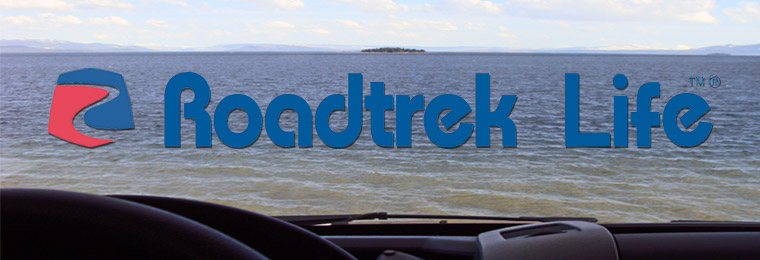If you’re tired of dragging the garden hose inside the RV to flush and clean the black holding tank, installing a permanent holding tank rinser may interest you. There are 3 permanent holding tank flusher/rinser device on the market that I know; one is the “Tornado Rotary Tank Rinser”, the “No-Fuss Flush” unit and the identical “Camco Quickie Flush” system. I went and bought the “No-Fuss Flush” unit as it was available at my local RV store. The “No-Fush Flush” unit does not come with an extension hose unlike the “Quickie Flush” seen on Amazon here: Click here. All of the above mentioned tank flush unit has a built in check valve to prevent any contents of the holding tank exiting via the flushing unit. The supplied holding screws (x3 zinc coated) for the "No-Fuss Flush" unit were not used, instead I purchased 3 stainless steel screws for this project.
1. Before starting with this project, make sure your black holding tank is empty; you do not want any surprises when drilling the required hole.
2. Raise the driver side wheels on ramps for easy access to underside of the RV. For safety, chock the passenger side wheels to prevent the RV from rolling off the ramps.
3. The installation location of the tank flushing unit is limited on the Agile as the only exposed side of the black tank is towards the rear end of the vehicle; all other sides are either covered by a shield or frame. Although, installing the flushing unit at this location is ideal as it can spray at the area where most solid waste might accumulate. The flushing unit does not spray directly at the tank sensors and at the area where the tank drains due to the tank design, although it might indirectly. The uppermost portion of black tank is partially covered by a frame, the most I can install it is about 3 inches from the top of the tank an inch shy of the flushing unit requirement of 2 inches.
4. Make sure you are 100% positive where to make the hole, this is a one shot attempt and cannot be reverted. “No-Fuss Flush” device requires an inch diameter hole.
5. Pre-fit the flush device then mark and drill pilot holes for the holding screws. Use generous amount of silicone sealant (required) around the hole, firmly mount the flush unit in place then secure it with 3 screws.
7. The hose is secured using zip-ties..
9. Remote flusher water inlet was mounted next to the holding tanks remote handle surround box using 2 rivets. A manual shut-off valve and a quick-connector with cap is used (optional) as pictured below.
10. Wide shot showing the city water inlet and the remote flusher water inlet.









No comments:
Post a Comment
Unfortunately due to high levels of spam, all comments are now moderated before they are posted. Thank you.